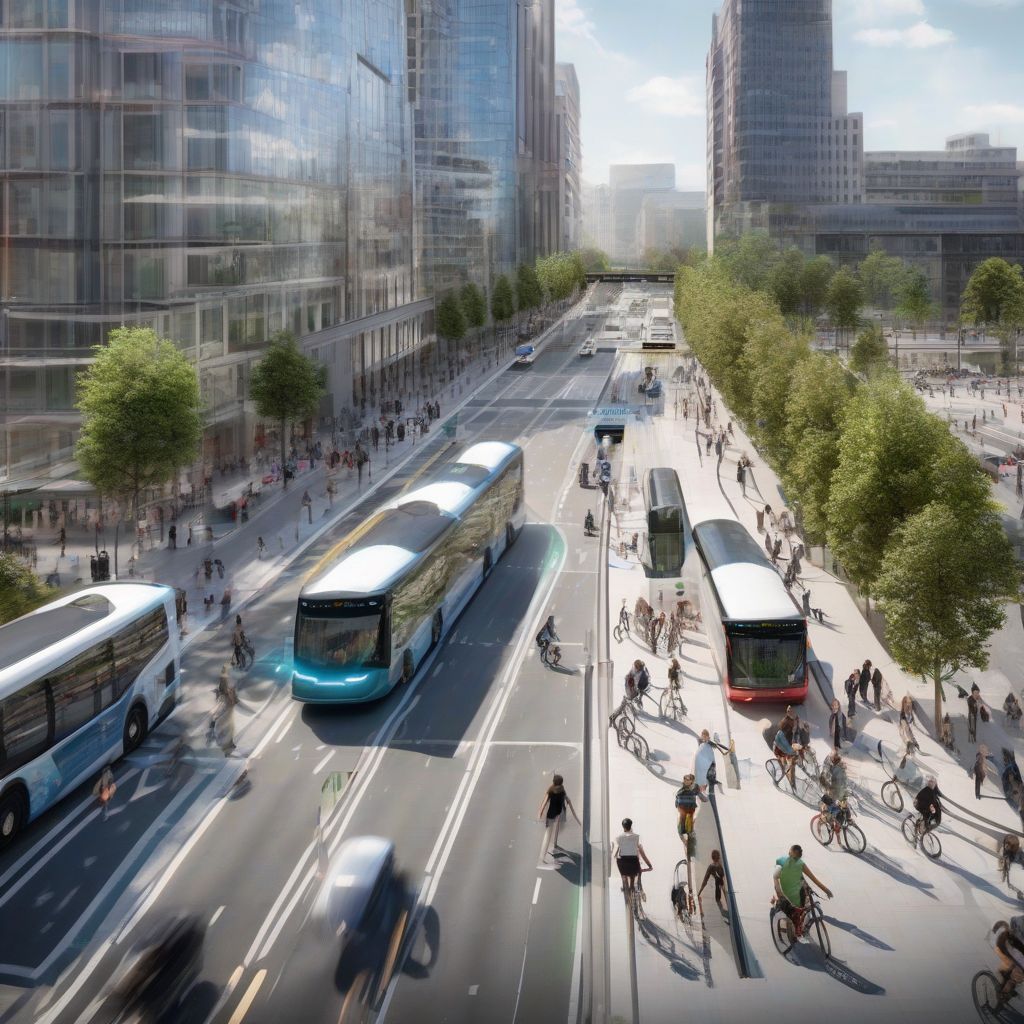Imagine a world where cities hum with electric vehicles, high-speed trains whisk passengers between urban centers, and cyclists glide along safe, dedicated paths. This is not a utopian dream, but a very real possibility within our grasp – and the key to unlocking it lies in sustainable transportation infrastructure.
For years, our reliance on cars and trucks has come at a steep cost. Congestion steals precious hours from our lives while polluting the air we breathe and contributing to climate change. Clearly, we need a new path forward, and that’s where sustainable transportation infrastructure comes into play. It’s about creating a diversified transportation system that is not only efficient and environmentally friendly but also equitable and accessible to all.
Building the Foundation: Key Elements of Sustainable Transportation Infrastructure
Sustainable transportation infrastructure goes far beyond just roads and bridges. It’s about creating a seamlessly integrated system that offers people convenient, affordable, and eco-friendly options for getting around. Here are the key components:
1. Public Transportation: Efficient and reliable public transportation is the backbone of any sustainable transportation system. This includes:
- High-speed rail: Connecting cities with fast, comfortable train lines reduces reliance on air travel and cars.
- Light rail and bus rapid transit: These systems offer efficient and frequent service within urban areas, decreasing congestion and travel time.
- Improved bus networks: Expanding bus routes, increasing frequency, and implementing real-time tracking can make this often-overlooked mode much more appealing.
2. Active Transportation: Making it safe and enjoyable to walk and cycle is crucial. This involves:
- Dedicated bike lanes: Physically separated bike lanes provide a safe space for cyclists of all ages and abilities.
- Pedestrian-friendly streets: Wider sidewalks, crosswalks designed for safety, and traffic calming measures encourage walking.
- Bike-sharing programs: Providing easy access to bikes for short trips can be a game changer in urban areas.
3. Electric Vehicle Infrastructure: As we transition to electric vehicles, the supporting infrastructure needs to keep pace:
- Charging stations: A robust network of conveniently located charging stations, both public and private, is essential to alleviate range anxiety.
- Grid modernization: Our electrical grids need to be modernized to handle the increased demand from electric vehicles.
 Sustainable Transportation Infrastructure
Sustainable Transportation Infrastructure
The Ripple Effect: Benefits of Sustainable Transportation Infrastructure
Investing in sustainable transportation infrastructure is not just about building a greener future; it’s about creating a better quality of life for everyone. Here’s how:
1. Environmental Sustainability:
- Reduced greenhouse gas emissions: By shifting away from fossil fuel-dependent transportation, we can significantly reduce carbon emissions and combat climate change.
- Improved air quality: Less traffic congestion means less air pollution, leading to healthier communities and ecosystems.
2. Economic Benefits:
- Job creation: Building and maintaining sustainable transportation infrastructure creates numerous jobs in manufacturing, construction, and technology.
- Increased economic productivity: Reduced congestion translates into less time wasted in traffic and increased productivity for businesses.
- Reduced healthcare costs: Healthier air quality leads to fewer respiratory illnesses and lower healthcare costs for individuals and society as a whole.
3. Social Equity:
- Improved accessibility: Sustainable transportation options provide greater accessibility for low-income communities, people with disabilities, and those without access to a car.
- Enhanced mobility: Efficient public transportation and safe walking and cycling infrastructure give people more choices for getting around, improving overall mobility and quality of life.
Overcoming the Roadblocks: Challenges and Solutions
While the benefits are clear, transitioning to a sustainable transportation future is not without its challenges. Here are some common roadblocks and potential solutions:
1. Funding: Building new infrastructure requires significant investment.
- Solution: Governments can prioritize sustainable transportation in their budgets, explore public-private partnerships, and implement innovative financing mechanisms like congestion pricing.
2. Public Perception: Changing long-held habits and encouraging people to embrace new modes of transportation can be challenging.
- Solution: Public awareness campaigns can highlight the benefits of sustainable transportation, while incentives for using public transportation, cycling, and electric vehicles can encourage a shift in behavior.
3. Infrastructure Integration: Creating a truly seamless and integrated transportation system requires careful planning and coordination.
- Solution: Cities and regions need to develop comprehensive transportation plans that consider all modes of transportation and prioritize connectivity and user experience.
Paving the Way to a Sustainable Future: A Call to Action
The need for sustainable transportation infrastructure is undeniable, and the time to act is now. As individuals, we can make conscious choices to reduce our reliance on cars, support policies that promote sustainable transportation, and advocate for change in our communities. Together, we can create a future where transportation is not only efficient and convenient but also environmentally responsible and accessible to all.
Conclusion:
The road to a sustainable future is paved with innovation, collaboration, and a commitment to creating a transportation system that benefits both people and the planet. By investing in robust public transportation networks, prioritizing active transportation options, and supporting the transition to electric vehicles, we can create healthier, more livable, and more prosperous communities for generations to come. Let’s embark on this journey together and build a future where sustainable transportation is not just an aspiration but a reality.
What steps can you take today to support sustainable transportation in your community? Share your thoughts and ideas in the comments below!
[amazon bestseller=”sustainable transportation”]
